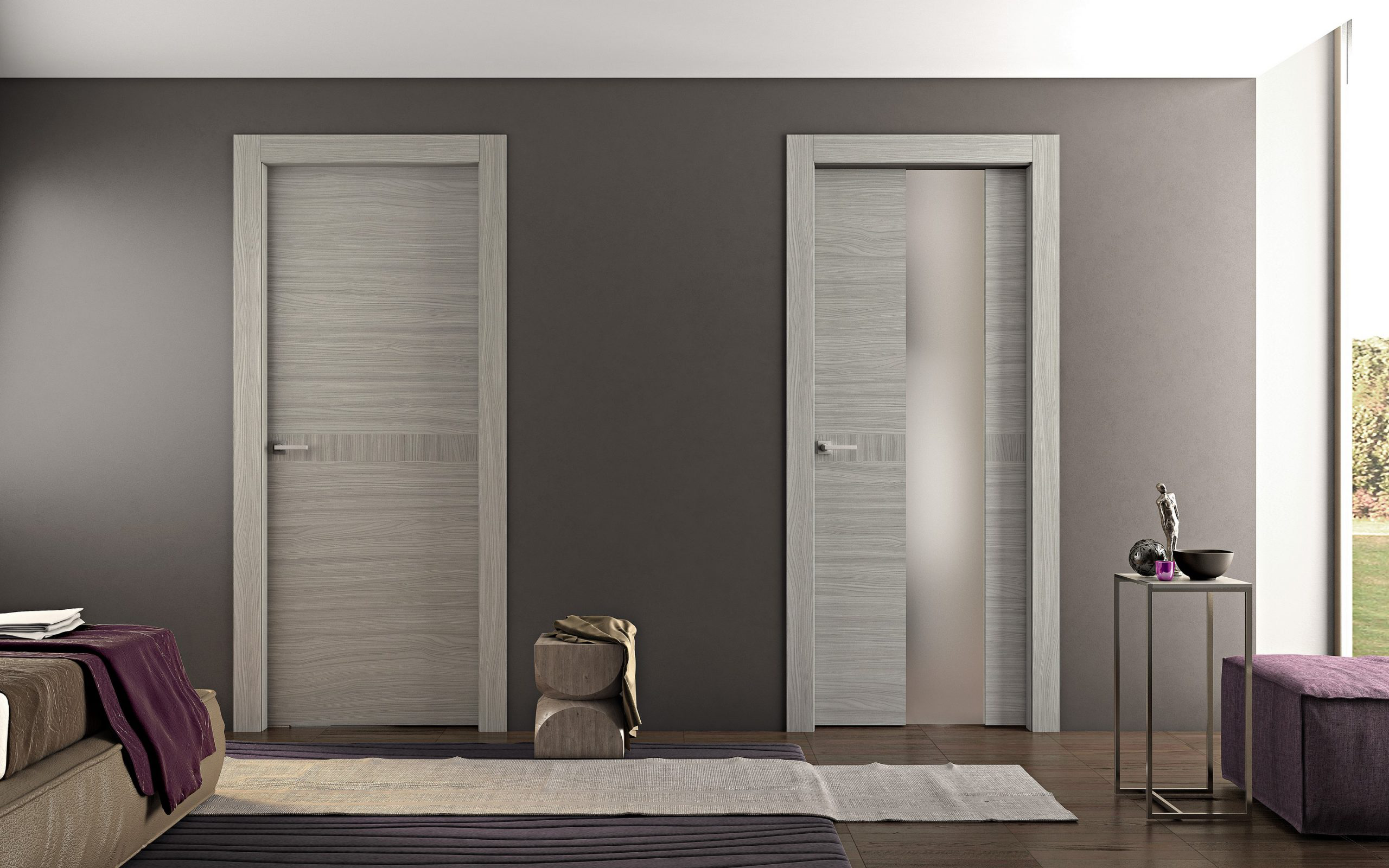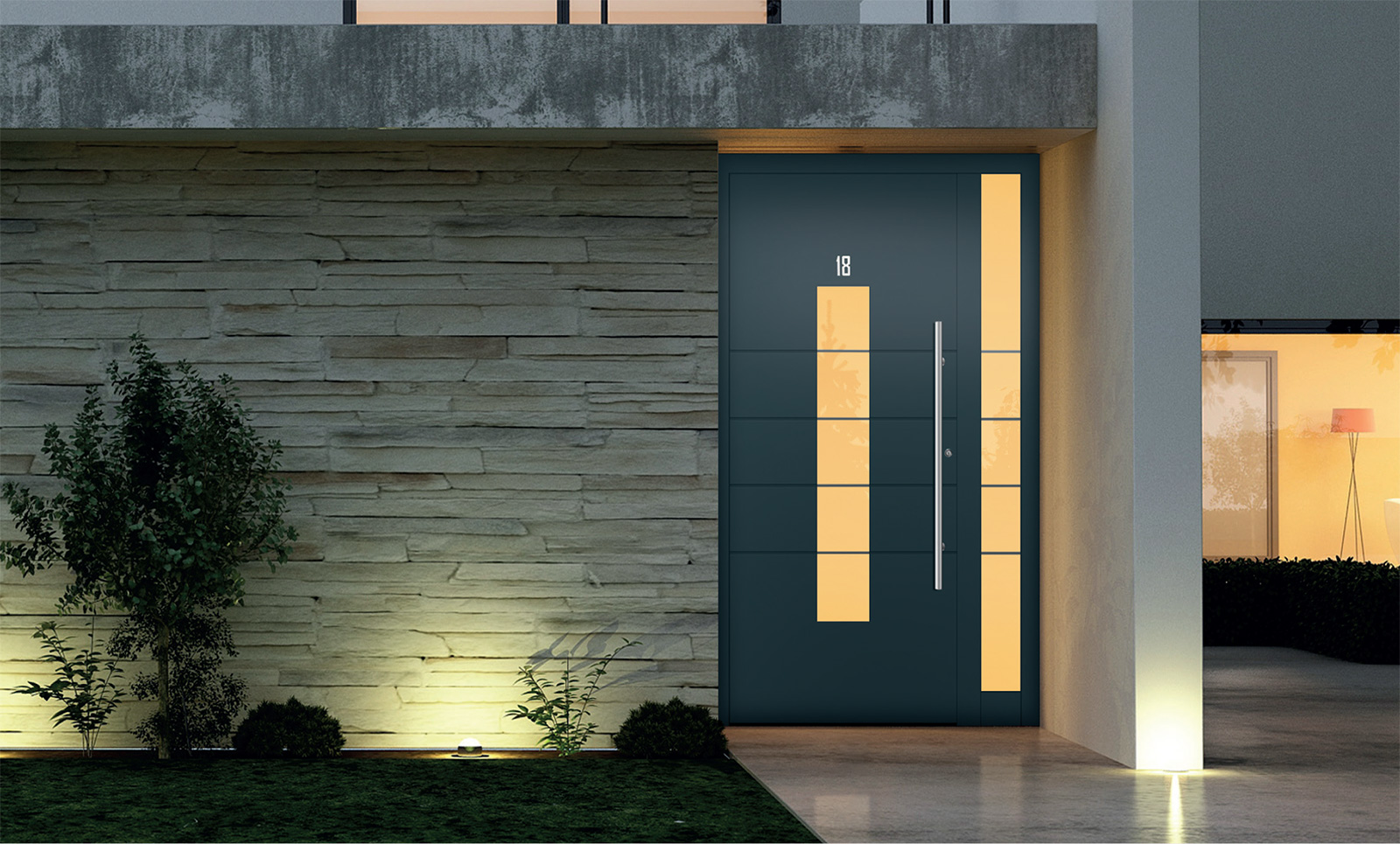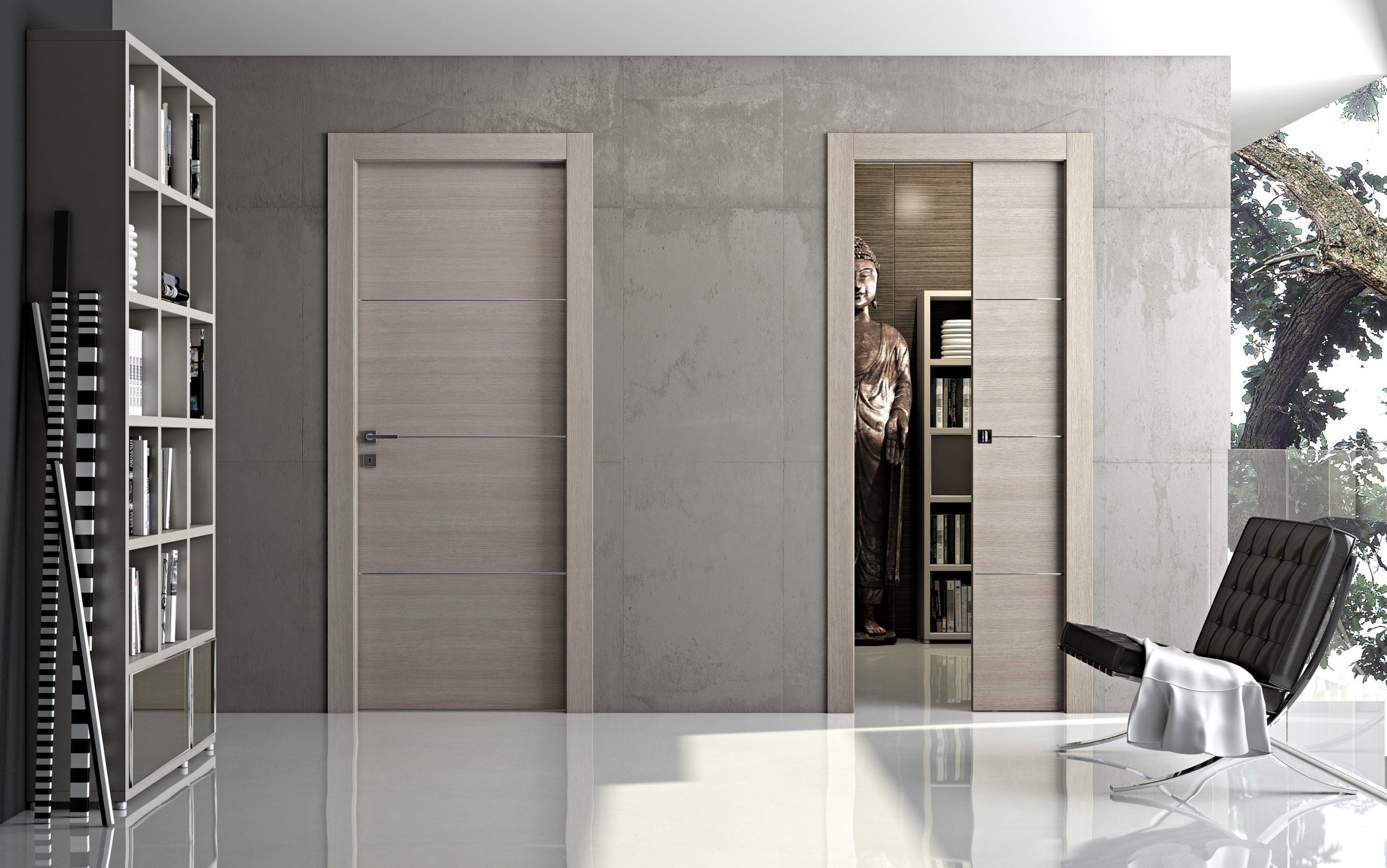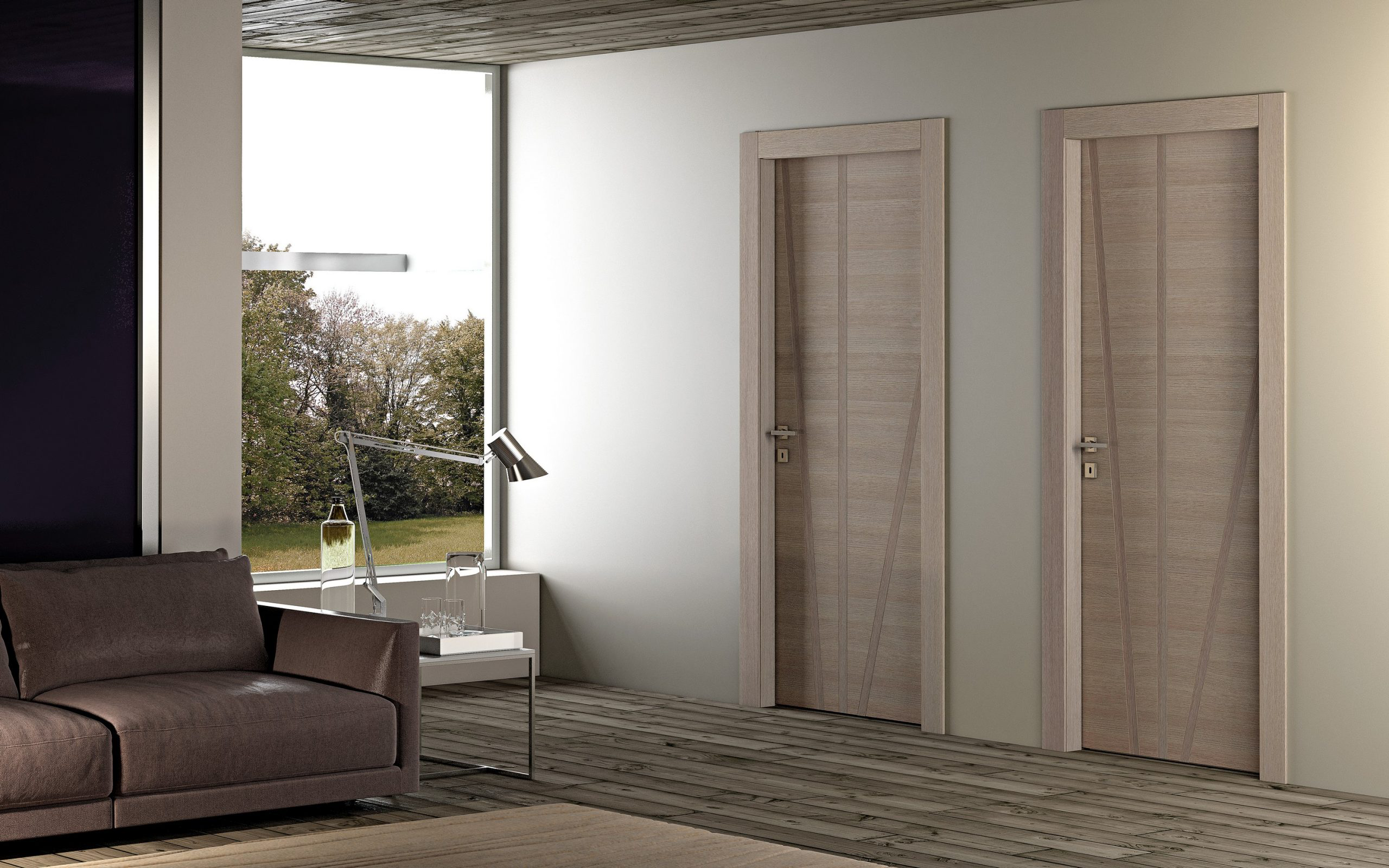What is the meaning of entry door?

Introduction to Entry Door
What Exactly is an Entry Door?
An entry door is the central doorway that allows you to enter a home or building. It is usually the first thing people see when they approach your house, so it serves as a functional piece of your home and plays a role in creating the first impression. Entry doors are typically more extensive and durable than interior doors, as they are designed to withstand the elements, offer privacy, and provide security.
An entry door can come in many shapes and sizes. It can be a single or a double door, depending on the design of your home and your personal preference. Materials used for entry doors vary widely, including wood, steel, fiberglass, and even glass. The design and material of your entry door will affect its durability, security, and energy efficiency.
Simply put, the entry door is more than just a way to get in and out of your home. It’s an essential element that combines style, safety, and function.
Why is the Entry Door Important for Your Home?
The entry door plays several crucial roles in your home’s overall functionality and appeal. Here are a few reasons why choosing the right entry door matters:
1. First Impressions Matter:
When people approach your house, the entry door is the first thing they notice. A well-chosen and stylish entry door adds to your home’s curb appeal and makes a great first impression. Whether you opt for a traditional wooden door, a sleek steel door, or a modern fiberglass option, the design of your entry door can help set the tone for the rest of your home’s style.
2. Security and Protection
Your entry door is the barrier between your family and the outside world. It’s crucial to choose a door that offers adequate security. A sturdy material, a solid lock system, and sound construction are key to ensuring that your entry door provides the protection your home needs. Many steel and fiberglass entry doors are designed to be highly secure and difficult to break into, offering peace of mind for homeowners.
3. Energy Efficiency
Another reason the entry door is essential is that it keeps your home energy-efficient. A well-insulated door can help regulate the temperature inside your house, reducing the need for excessive heating or cooling. Entry doors made of fiberglass or steel often have better insulation, keeping drafts out in winter and cool air inside during the summer. This can help lower your energy bills over time.
4. Durability and Longevity
Entry doors are a significant investment. A high-quality door can last for years, offering protection from the weather, the elements, and even wear and tear. Depending on the material you choose—wooden, steel, or fiberglass—the durability and maintenance requirements will vary. However, a good entry door is designed to withstand constant use and changing weather conditions.
Types of Entry Door
Common Entry Door Materials
Choosing the right material is one of the most important decisions when selecting entry doors. The material affects not only the door’s style and appearance but also its durability, security, and energy efficiency. Here are some of the most common materials used for entry doors:
1. Wood Entry Doors
Wood is a classic and timeless material for entry doors. It offers a warm, natural look that easily complements various home styles. Wooden entry doors are often chosen for their rich appearance and ability to be customized. You can stain or paint them to match your home’s exterior. However, they require regular maintenance, such as sealing, to prevent weather damage.

2. Steel Entry Doors
Steel entry doors are popular for their durability and security features. They are strong, wear-resistant, and provide excellent protection against break-ins. Many steel doors also have a foam insulation core, making them more energy-efficient. Steel could be a great option if you’re looking for a secure door requiring less maintenance than wood.
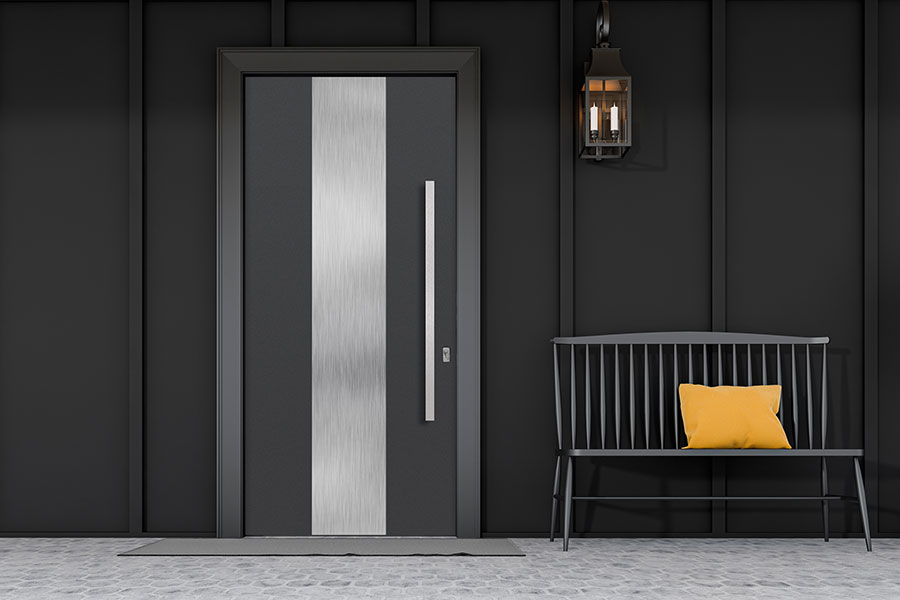
3. Cast Aluminum Entry Doors
Cast aluminum entry doors are a premium front door solution that combines exceptional strength, security, and elegant design. Made using integrated cast aluminum molding technology, the door panel is highly resistant to impact, corrosion, and fire. Its surface can be intricately crafted with luxurious patterns, offering both functionality and aesthetic appeal.

Popular Entry Door Styles
The style of your entry doors play a significant role in the overall aesthetic of your home. There are many styles to choose from, and each brings its unique character to the exterior of your home. Here are some of the most popular entry door styles:
1. Traditional Entry Doors
Traditional entry doors are often wood-made and feature simple, classic designs. These doors typically have raised panels and can be complemented by side windows or decorative hardware. They are ideal for homeowners who prefer a more timeless, classic look.
2. Modern Entry Doors
Modern entry doors are an excellent choice for those who prefer a sleeker, more contemporary look. These doors often feature clean lines, minimalist designs, and materials like steel or fiberglass. They can come with large glass panels or geometric patterns, adding a bold statement to your home’s exterior.
3. French Doors
French doors are another popular choice for entry doors, especially if you have a more expansive entryway. These double doors typically have large glass panes, offering an open, airy look. They are ideal for homeowners who want to bring in a lot of natural light while maintaining a stylish and functional entry.

4. Sliding Entry Doors
Sliding entry doors are often used in homes with limited space. These doors operate by sliding horizontally along a track rather than swinging open. They are especially popular in homes that open to a patio or garden, as they offer a seamless transition from the inside to the outside.

Custom Entry Door
A custom entry door might be the right option if you’re looking for a door that perfectly fits your home’s needs and style. Custom entry doors allow you to create a designed door for your home. Here are a few reasons to consider going custom:
1. Tailored to Your Home’s Style
A custom entry door allows you to select the exact materials, colors, and designs that match your home’s exterior. Whether you prefer a modern look or something more traditional, a custom door can be crafted to meet your specific aesthetic preferences.
2. Unique Features and Design Elements
With custom entry doors, you can add unique design elements that make your home stand out. This could include decorative glass panels, custom carvings, or one-of-a-kind hardware. Custom doors can also be built with extra features like sidelights, transom windows, or double doors for a grand entrance.
3. Improved Functionality
A custom entry door can be designed to address your specific functional needs. If you live in an area with extreme weather, you might choose materials better suited to resist the elements. Or, if security is a top priority, you can opt for features like reinforced frames or specialized locks.
4. Perfect Fit for Your Entryway
Sometimes, homes have entryways that are unusual or non-standard in size, and a pre-made door just won’t fit. In these cases, a custom entry door can be the perfect solution. You can have a door designed to perfectly fit your entryway’s dimensions, ensuring it looks great and works well for your home.
The Importance of Choosing the Right Entry Door
Enhancing Curb Appeal with Your Entry Door
When it comes to the exterior of your home, the entry door is often the first thing people notice. A beautiful, well-chosen entry door can instantly boost your home’s curb appeal and make a lasting first impression. Whether you want to create a warm, inviting atmosphere or a sleek and modern look, the right door can set the tone for your home.
The design of your entry door should complement your home’s overall style. A classic wooden entry door with intricate panelling may be the perfect choice if you have a traditional house. On the other hand, for a more modern home, a fiberglass or steel entry door with clean lines and minimalistic features might be a better fit. Additionally, consider the color and hardware of the door—small details like a bold door color or stylish handles can further enhance the appeal.
A well-chosen entry door doesn’t just make your home look good; it can increase the overall value of your property. Homes with attractive, well-maintained doors tend to stand out more in the real estate market, which can be vital if you ever sell.

Entry Doors and Home Security
Your entry doors are the first line of defense against unwanted visitors, making it a critical component of your home’s security. Choosing the right door can improve your home’s safety and give you peace of mind.
Steel entry doors are among the most secure options available. They are tough, resistant to forced entry, and typically have reinforced frames and secure locking mechanisms. Many modern steel doors also offer advanced security features, such as multi-point locks or smart lock systems.
Cast aluminum entry doors are another great security option. Although not as strong as steel, they are still highly durable and resistant to wear and tear. Many cast aluminum doors come with foam insulation cores, improving energy efficiency and adding an extra layer of security.
If security is a top priority, consider installing reinforced glass panels in your entry door. While glass adds beauty and light, many options like frosted or tempered glass provide a balance of security and aesthetic appeal.
The type of lock you choose is essential, along with the door itself. To further enhance the security of your entry door, opt for a high-quality lock system, such as a deadbolt or smart lock.
Energy Efficiency Considerations
Your entry door plays a significant role in your home’s energy efficiency. A door that isn’t correctly insulated can let cold air in during the winter and cool air out during the summer, causing your heating and cooling system to work harder. This results in higher energy bills and less comfort inside your home.
Cast aluminum and steel entry doors are excellent choices for energy efficiency. These materials are naturally more insulating than wood, helping keep your home at a stable temperature. Many entry doors also come with foam cores that improve insulation. For the best results, look for doors with high R-values, which indicate how well the door resists heat transfer.
Another consideration is the door’s weatherstripping. Proper weatherstripping around the entry door helps seal gaps where air leaks in or out. This simple addition can significantly improve your home’s energy efficiency.
If you live in an area with extreme weather conditions, such as freezing winters or hot summers, investing in an energy-efficient entry door is especially important. Choosing a door with proper insulation and a good seal can reduce your reliance on heating and cooling systems, saving you money on energy bills while keeping your home comfortable year-round.
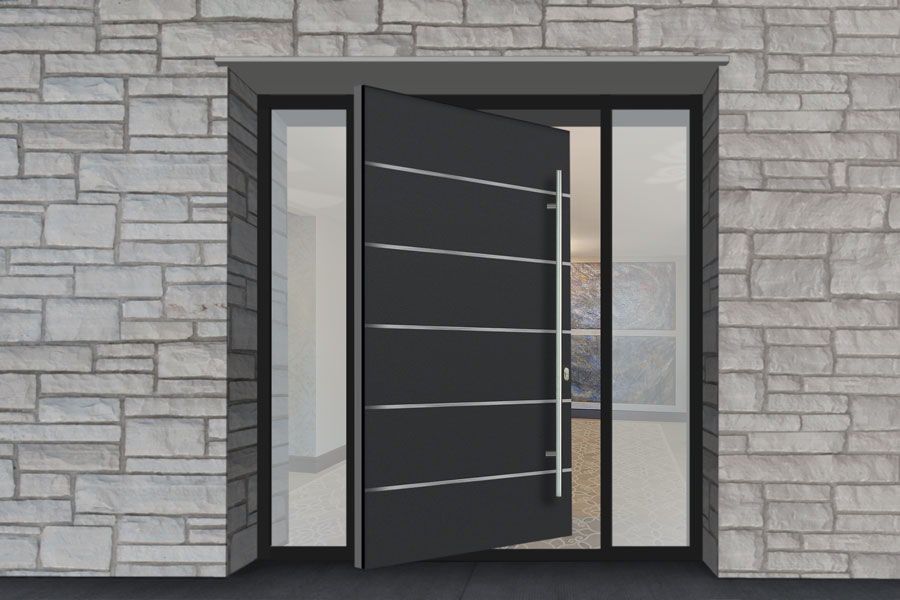
How to Choose the Best Entry Door for Your Home?
Factors to Consider When Buying an Entry Door
Choosing the best entry doors for your home involves considering several important factors. Here are the key aspects you should keep in mind when shopping for your new door:
1. Material and Durability
The material of your entry door determines its durability, security, and maintenance needs. For instance, steel doors are highly durable and offer strong protection against break-ins, but they can dent more quickly than other materials. On the other hand, wooden entry doors offer classic beauty but require regular maintenance to protect them from weather damage. Cast aluminum entry doors are a fantastic alternative, as they are lightweight yet robust and corrosion-resistant. They require very little maintenance, making them a practical choice for homeowners seeking durability without the hassle of constant upkeep.
2. Style and Design
Your entry door should reflect the overall style of your home. Whether you’re going for a traditional, modern, or rustic look, the design of your door plays a significant role in your home’s curb appeal. Consider the number of panels, the type of glass (if any), and the hardware. Also, consider whether you want a single or double entry door. The right style can significantly enhance the appearance of your home and set the tone for the rest of your space.
3. Security Features
Security is one of the main reasons people choose an entry door. Look for doors with reinforced frames, strong locks, and impact-resistant materials. Steel doors and cast aluminum doors are excellent choices for added security. Cast aluminum doors offer strength and resistance to forced entry, while being lightweight enough to handle easily. If you live in an area with high crime rates, opting for doors with extra security features like smart locks or deadbolt locks is wise. Also, check the quality of the door’s hardware—strong handles and locks are essential for safety.
4. Energy Efficiency
An energy-efficient entry door can help lower your energy bills. Doors made of cast aluminum are known for their strength and insulating properties. They are typically designed with thermal breaks and insulated cores, helping to prevent heat loss in the winter and keep your home cooler in the summer. Look for well-insulated doors with good weatherstripping around the edges to avoid drafts. An energy-efficient entry door can help keep your home comfortable year-round while lowering your reliance on heating and cooling systems.
5. Budget
While you don’t want to compromise on quality, your entry door should also fit within your budget. Prices can vary widely depending on the material, size, and features. Remember that the initial cost of the door may be an investment that saves you money in the long run, especially when choosing a durable, energy-efficient option. This factor also affects installation costs, as some doors may require professional installation.

How to Measure for the Perfect Entry Door?
Before you purchase your entry doors, measuring the space correctly is essential. Here’s a step-by-step guide to help you measure for the perfect entry door:
1. Measure the Door Frame
Start by measuring the width and height of the door frame, not the door itself. Use a tape measure to get accurate measurements. Measure the width at the frame’s top, middle, and bottom. Similarly, measure the height at the frame’s left, middle, and right sides. These measurements will help you determine the proper size of the new entry door.
2. Check the Door’s Rough Opening
The rough opening is the gap in your wall where the door will be installed. Measure the width and height of this opening to ensure the new door will fit. Ensure enough room for the door and the frame, allowing space for adjustments and insulation.
3. Measure the Threshold
Next, measure the height and width of the threshold, which is the bottom portion of the door frame. This helps ensure the new entry door fits appropriately, especially if upgrading to a more energy-efficient option with better weatherstripping.
4. Allow for Clearance
Ensure that you leave enough space around the door for proper clearance. This includes space for the door to swing open and shut smoothly without hitting obstacles like walls or furniture.
If you’re unsure about taking the measurements yourself, it’s always a good idea to consult a professional to ensure your entry door fits perfectly. A door that’s too large or small can be costly to adjust or replace.
Budgeting for Your Entry Door
When it comes to budgeting for your entry doors, there are a few things to keep in mind to ensure you get the best value for your money:
1. Material Costs
The material you choose will significantly affect the overall cost of your entry doors. For example, wooden doors can be more expensive than cast aluminum or steel doors due to the craftsmanship required. While cast aluminum doors are often more affordable, they offer superior durability and require less maintenance than wood, making them a cost-effective option in the long term.
2. Door Size and Style
The size and style of the entry door you choose will also impact the price. Custom-sized or double entry doors can be more expensive than standard single doors. Additionally, doors with intricate designs, decorative glass, or high-end hardware will typically cost more. Remember that while custom designs add a personal touch, they come at a premium price.
3. Installation Costs
In addition to the door’s cost, you’ll need to account for installation. Entry door installation can cost depending on the job’s complexity, the type of door, and whether you need to adjust the frame or structure of the doorway. Some companies include installation in the price of the door, while others may charge separately. If you’re doing it yourself, factor in the cost of tools and materials.
4. Long-Term Savings
Although choosing a cheaper door upfront is tempting, consider the long-term savings an energy-efficient entry door can provide. A well-insulated door, like a cast aluminum entry door, will help you save on heating and cooling costs, making it a wise investment. Similarly, cast aluminum doors that require less maintenance over time could save you money on repairs and replacements.
Installation of Entry Door
Should You Install Your Entry Door Yourself or Hire a Professional?
When it comes to installing your entry door, you might wonder if you should do it yourself or hire a professional. Both options have pros and cons, so it’s important to weigh them carefully.
DIY Installation:
Installing an entry door yourself can be a rewarding experience if you’re handy with tools and have some basic home improvement skills. One of the most significant advantages of DIY installation is saving money. You won’t have to pay for labor costs, which can add up quickly, especially if you’re dealing with a custom door or a complex installation.
However, there are challenges. If the door frame isn’t perfectly square or there are issues with the existing structure, it could be challenging to align the door properly. Entry doors must be installed with precision to ensure they function smoothly, are secure, and are energy-efficient. If you’re not confident in your skills or don’t have the right tools, the project can take longer and become more frustrating than anticipated.
Professional Installation:
Hiring a professional to install your entry door can save you time and effort. Experienced installers know exactly how to correctly measure, fit, and seal the door. They will ensure that your entry door is installed securely, aligns perfectly with the frame, and has proper weatherproofing to keep your home energy-efficient.
The downside of hiring a professional is the cost. Labor charges can add up, especially for custom or high-end entry doors. However, the added peace of mind that comes with knowing the job will be done right is often worth the extra expense.
In short, if you’re confident in your DIY skills and the door installation is straightforward, tackle the project yourself. But if you want a flawless installation or have a more complex door setup, hiring a professional might be the best choice.

Steps to Properly Install an Entry Door
Installing an entry door properly is crucial for its performance and longevity. Here are the essential steps to follow if you’re installing your entry door yourself or overseeing the process:
1. Remove the Old Door
Start by removing the existing entry door. If replacing an old door, carefully remove it and its frame. This might involve removing screws, nails, or door hardware. Take your time and avoid damaging the surrounding wall or trim.
2. Prepare the Door Frame
Before installing the new entry door, check the condition of the door frame. Ensure that the frame is square, level, and free from damage. If there are any issues with the frame, you may need to make repairs or adjustments. Use a level to double-check that the frame is plumb, and ensure the opening is wide enough to accommodate your new door.
3. Install the Door Sill and Threshold
The sill or threshold is the bottom part of the entry door frame. Install it first, making sure it’s level. The threshold is key in sealing drafts and keeping moisture out, so it must be securely in place. Some entry doors come with a pre-installed threshold, but if yours doesn’t, you’ll need to install it separately before placing the door.
4. Position the New Entry Door
With help (if necessary), carefully lift the new entry door and position it into the door frame. Make sure the door sits evenly on the threshold and the top of the door is level with the frame. Use shims to ensure the door is square and centered in the frame. Once it’s positioned correctly, secure the door by attaching it to the frame with screws or nails.
5. Install the Door Hardware
Next, install the door hardware, such as the hinges, locks, and handle. This step will vary depending on the type of entry door you’ve chosen. If installing a steel or cast aluminum entry door, ensure the hinges are correctly aligned and the door swings smoothly. Install the lock system and handle, ensuring they function correctly and securely.
6. Seal the Gaps
One of the most important steps in installing your entry door is ensuring no gaps around the door. This includes sealing the edges of the frame to prevent drafts and improve energy efficiency. Apply weatherstripping around the door frame, and use caulking or foam insulation to fill any more significant gaps. A properly sealed entry door will keep your home comfortable and energy-efficient.
7. Test the Door
Finally, test the door to ensure it opens and closes smoothly. Check that the locks function correctly and that there is no resistance when opening or closing the door. Ensure that the door is aligned correctly in the frame and that the hardware is securely attached. Make any final adjustments if necessary.
Summary
If you follow these steps carefully, your entry door should be properly installed and provide security, insulation, and curb appeal for years. While installing a door might seem like a challenging task, with the right tools and a bit of patience, it’s achievable for most homeowners. Remember, if you run into trouble or the job seems too complex, don’t hesitate to call a professional installer for assistance.

Relate FAQ
Why is an entry door important?
An entry door is crucial because it offers security, insulation, and aesthetic appeal. It helps maintain the home's internal environment by blocking drafts and preventing heat loss or gain. A well-designed entry door enhances curb appeal and can significantly impact the first impression of your home.
What materials are used to make entry doors?
Entry doors can be made from a variety of materials, including:
- Wood: Offers a classic, warm look but requires regular maintenance.
- Steel: Known for durability and security, steel entry doors often have a foam core for insulation.
- Cast Aluminum: Lightweight, durable, and resistant to corrosion, cast aluminum entry doors are an excellent option for both security and style.
What is the difference between an entry door and an interior door?
The primary difference is that entry doors are designed to withstand external weather conditions, provide security, and offer aesthetic appeal from the outside. They are usually more robust and insulated than interior doors, which are lighter, typically used for privacy within the home, and do not require the same level of security or weather resistance.
How do I choose the right entry door?
When choosing the right entry door, consider the following:
- Material: Decide based on durability, aesthetics, and maintenance.
- Security: Look for reinforced structures and secure locks.
- Energy efficiency: Choose insulated doors to minimize energy loss.
- Style: Match the door to your home's overall design and architecture.
- Budget: Select a door within your price range, considering installation costs.
How long does an entry door last?
An entry door’s lifespan depends on the material and the maintenance it receives. Steel and cast aluminum doors typically last 30 to 50 years, while wooden doors, which may require more frequent repairs and refinishing, have a lifespan of 15 to 30 years.
Can entry doors be customized?
Many entry doors can be customized in material, size, color, and design. You can add features such as sidelights, decorative glass panels, custom hardware, and more to fit your home's specific style and security needs.
What is the best time to replace an entry door?
The best time to replace an entry door is during the spring or fall, when temperatures are moderate. This ensures proper installation, especially if the door requires weatherstripping or adjustments to maintain energy efficiency. However, you can replace an entry door if it is worn, damaged, or inefficient.
